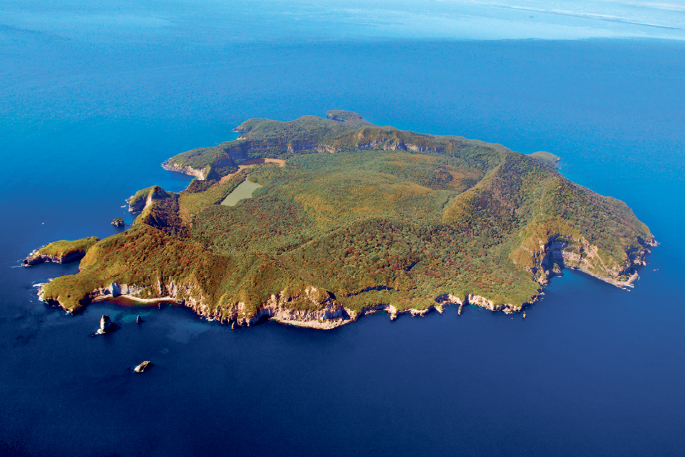Nailing down whether the Tuhua Marine reserve round the northern side of Mayor Island, is in fact acting as a snapper nursery is going to be difficult to confirm because of its situation, says research team leader professor John Montgomery. The research is based on snapper larvae from the Goat Island Marine Reserve at Leigh. While marine reserves are useful in encouraging biodiversity recovery with the reserves protecting exploited species, a snapper nursery requires a stable adult population as well as a suitable area downstream. “It depends a bit on the area downstream of that appropriate settlement area,” says John. “With Leigh, we studied the area to the north of the reserve. We know the larvae are being washed north of the reserve based on the modelling, but we found it difficult to actually capture newly settled animals up there because it’s just basically a big open surf beach.” The reserve effect was more noticeable south of Goat Island, where there are the harbours and sea grass that provide a settlement habitat. “So those will be the reservations,” says John. “You need a stable population and an area downstream that is effective for post larval settlement.” Further down the track it is something people could take into account in siting new marine reserves, if replenishing snapper stocks was one of the stated objectives. “What we have done is provide an actual look at larval settlement areas and run the models backwards and see where those spawning populations are.” With the spawning populations known, they could be looked after so they basically keep fuelling the larval development areas, says John. The team, including Dr Shane Lavery and former University of Auckland postdoctoral fellow Dr Agnès Le Port, used a combination of genetic testing and hydrodynamic modelling of snapper larvae to determine that a higher proportion of young snapper in fishing areas north of Auckland are related to adult snapper from the Goat Island Marine Reserve. This confirmed what scientists have long suspected – that the reserve acts as a giant snapper nursery. The study from the University of Auckland’s Institute of Marine Science is the first time scientists have studied a temperate commercial fishing species to find evidence of a direct parental link between adults in a marine protected area to juveniles outside. They found at least 11 per cent of juvenile snapper up to 40km away were the offspring of spawning adults from the reserve at Leigh, whereas no offspring matches were found to adult snapper sampled from non-reserve areas. “The contribution from the reserve is about 10 times higher than would be expected if snapper larval contribution was simply proportional to geographic area,” says John. “Even though the reserve is a tiny percentage of the area studied, it is more than pulling its weight in contributing to snapper populations outside.” An area of 400 square kilometres was included in the study, from Mangawhai in the north to Mahurangi in the south. Goat Island Marine Reserve makes up just 1.3 percent of the area studied. It is a ‘no take’ marine reserve, meaning fishing is strictly prohibited. “This is the first estimate of the larval contribution of adult snapper from the reserve into the surrounding fishery.” Previous research has shown that while snapper move over a wide area, resident snapper within the reserve tend to stay put for some time, forming a significant breeding population of large individuals. “Enough of them stick around within the reserve for our data to show a direct and significant link between the adults in the reserve and the juveniles many kilometres away.” For the research, adult snapper within the reserve were caught, tagged and a fin clip sample taken before being returned to the water. The same technique was then used in non-reserve areas. Professor Montgomery says the hydrodynamic modelling work done for the study is the first time scientists have used the method alongside multiple genetic techniques. “Hydrodynamic computer modelling uses our understanding of tidal currents and wind patterns to predict where snapper larvae end up. “The agreement between predicted dispersal and the genetic matches helps validate the modelling and its potential use in the design of future marine protected areas.”
Tuesday, December 23, 2025
Posted: 11:00am Tuesday 19 Dec, 2017
Snapper nursery unproven

There’s no research been done on fish populations at the Tuhua Marine Reserve. Another www.photographics.co.nz stock image. Copyright Chris Parker.


0 Comments
Leave a Comment